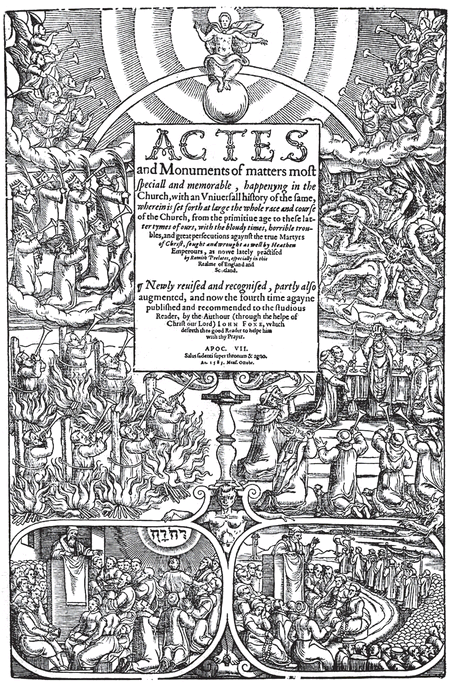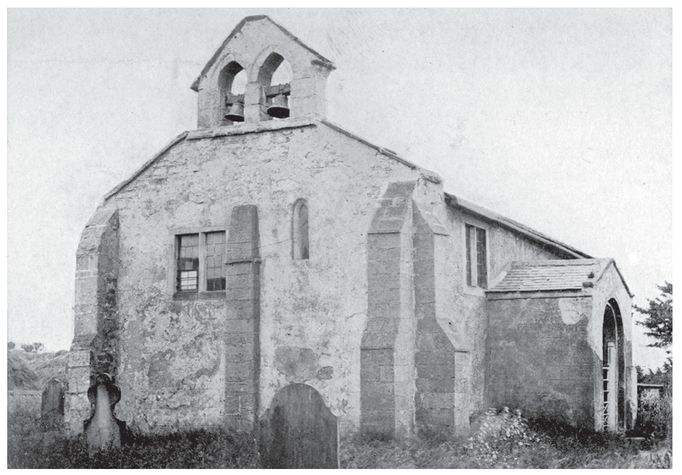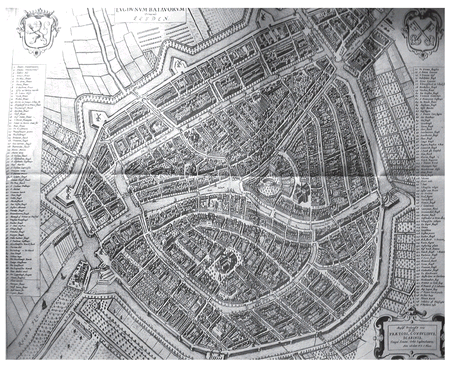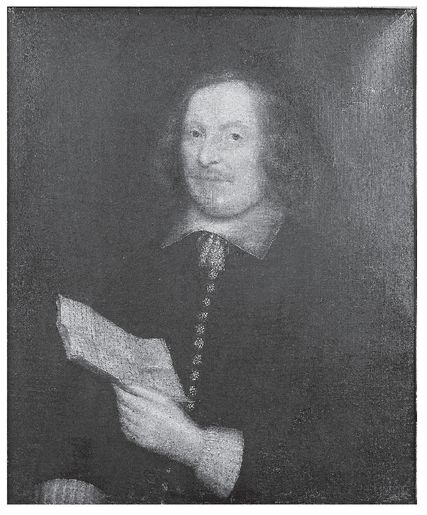Read The Mayflower and the Pilgrims' New World* Online
Authors: Nathaniel Philbrick
Tags: #Retail, #Ages 10+
The Mayflower and the Pilgrims' New World* (3 page)

BOOK: The Mayflower and the Pilgrims' New World*
7.77Mb size Format: txt, pdf, ePub
ads
Their time in Leiden, they now realized, had been a mere rehearsal for the real adventure. Because of the extraordinary spiritual connection they had developed as exiles, they were prepared for whatever lay ahead. “[I]t is not with us as with other men,” Robinson and Brewster confidently insisted, “whom small things can discourage, or small discontentments cause to wish themselves home again.” Or, as one of their number, a thirty-year-old corduroy worker named William Bradford, later wrote, “They knew they were pilgrims.”
Â
âââ Taking Bradford's lead, we refer to them today as the Pilgrims, a name that is as good as any to describe a people who were almost always on the move. Eventually, Bradford became their leader, and if not for his steady, often forceful leadership, it is doubtful whether there ever would have been a colony at all. Without his
Of Plymouth Plantation,
certainly the greatest book written in seventeenth-century America, there would be almost no information about the voyage with which it all began. For William Bradford, however, the true voyage had begun close to twenty years before.
Of Plymouth Plantation,
certainly the greatest book written in seventeenth-century America, there would be almost no information about the voyage with which it all began. For William Bradford, however, the true voyage had begun close to twenty years before.
William Bradford was born in the tiny farming town of Austerfield, Yorkshire, deep in northern England. Although he came from a family of well-to-do farmers, Bradford had experienced more than his share of troubles. By the time he turned twelve, he had lost not only his father, his mother, and a sister, but also the grandfather who had raised him. soon after moving in with his two uncles, he was struck by a mysterious illness that prevented him from working in the fields. Bradford later claimed that his “long sickness” had saved him from “the vanities of youth, and made him the fitter for what he was afterwards to undergo.” Most important, his illness gave him the opportunity to read.
Lonely and intelligent, he looked to the Bible for consolation and guidance. For a boy in need of instruction, the Geneva Bible, translated in the previous century by a small team of English ministers and equipped with helpful notes, was just the thing. There was also John Foxe's
Book of Martyrs,
an account of the Protestants killed by Queen Elizabeth's Catholic predecessor on the throne, “Bloody Mary.” Foxe insisted that England was, like Israel before it, God's chosen nation. This had a deep and lasting influence on Bradford, and as Foxe made horrifyingly clear, to be a godly Englishman sometimes required a person to make the ultimate sacrifice.
Book of Martyrs,
an account of the Protestants killed by Queen Elizabeth's Catholic predecessor on the throne, “Bloody Mary.” Foxe insisted that England was, like Israel before it, God's chosen nation. This had a deep and lasting influence on Bradford, and as Foxe made horrifyingly clear, to be a godly Englishman sometimes required a person to make the ultimate sacrifice.
Bradford was just twelve years old when he became uneasy with the way God was worshipped in Austerfield. He eventually found what he was looking for when he met William Brewster, the postmaster in a neighboring town called scrooby. At Brewster's home, a group of separatist Puritans gathered every sunday to worship in secret under the direction of two ministers, one of whom was the young John Robinson.
At the turn of the seventeenth century, there were a lot of debates about the proper way for a Christian to worship God. Puritans believed it was necessary to go back to the absolute beginning of Christianity, before the church had been corrupted by man. To them, the New Testament provided the only reliable account of Christ's time on earth, while the Old Testament contained a rich storehouse of truths. If something was not in the scriptures, it was a man-made distortion of what God intended. The Puritans had chosen to turn away from thousands of years of tradition in favor of a text that gave them a direct and personal connection to God.

â¢
Title page of a 1583 edition of John Foxe's
Book of Martyrs.
Title page of a 1583 edition of John Foxe's
Book of Martyrs.

â¢
St. Helena's Church in Austerfield, Yorkshire, where Bradford worshipped as a young boy.
St. Helena's Church in Austerfield, Yorkshire, where Bradford worshipped as a young boy.
A Puritan had no use for the Church of England's Book of Common Prayer, since it tampered with the original meaning of the Bible. Even more importantly, Puritans saw no reason for the system of bishops that ran the Church of England. The only biblically acceptable organizational unit was the individual congregation.
Taking their cue from the apostle Paul's words to “come out among them, and be separate,” the separatists were Puritans who had determined that the Church of England was not a true church of Christ. If they were to remain true to their faith, they must form a church of what were known as “visible saints,” members who supported each other in the proper worship of God. If members of the congregation strayed from the true path, they were criticized; if they failed to correct themselves, they were forced to leave the congregation. A separatist congregation shared in an intense bond of spirituality and discipline that touched every aspect of everyone's life.
King James viewed all Puritans as troublemakers, and at a gathering of religious leaders at his palace in Hampton Court, he angrily declared, “I shall harry them out of the land!” The congregation that met at Brewster's house knew that it was only a matter of time before the authorities found them out.
sometime in 1607, the bishop of York became aware of the meetings at Brewster's manor house. some members of the congregation were thrown in prison; others discovered that their houses were being watched. It was time to leave. But if King James had vowed to “harry” the Puritans out of England, he was unwilling to provide them with a legal means of leaving the country. A person needed official permission to voyage to the Continent, something the authorities refused to grant the separatists. If they were to sail for Holland, they must do it secretly.
For a group of farmers, most of whom had rarely, if ever, ventured beyond the Nottinghamshire-Yorkshire region, it was a scary prospect. But for seventeen-year-old William Bradford, who would lose the people upon whom he had come to depend if he did not follow them to Holland, there was little choice in the matter. Despite the protests of his friends and relatives, who must have pointed out that he was due to receive a comfortable inheritance at age twenty-one, he decided to sail with John Robinson and William Brewster to a new land.
Â
âââ Their escape from England did not go well. The first ship captain they hired turned out to be a traitor and a thief who surrendered them to the authorities. After their leaders spent several months in jail, they tried again. This time they hired a trustworthy Dutch captain, but they had not yet loaded all the men or any women and children onto the vessel when the local militia appeared. Fearing capture, the captain set sail for Amsterdam, leaving the women and children weeping as their husbands looked on from the deck of the departing ship. It was several months before they were all reunited in Holland.
Once in Amsterdam, the separatists found themselves thrust into conflict with other English separatists who had come before them. Not wanting to get involved in their debates or worship, they moved on. showing the firmness, sensitivity, and judgment that came to characterize his ministry in the years ahead, John Robinson led his congregation to the neighboring city of Leiden, where they were free to establish themselves on their own terms.
In Leiden, Robinson found a house not far from the Pieterskerk, one of the city's largest churches. In the garden behind Robinson's home, they created a miniature village of close to a dozen houses. Even though approximately half the congregation lived in houses elsewhere in the city, what was known as De Groene Poort, meaning the green lane or alley, came to represent the ideal of a Christian village they would aspire to for the rest of their lives.
William Bradford soon emerged as one of the leading members of the congregation. When he turned twenty-one in 1611, he sold the property he had inherited in England and used the money to buy a small house in Leiden. A fustian, or corduroy worker, Bradford became a citizen of Leiden in 1612 in recognition of his high standing in the community. In 1613, he married Dorothy May, and four years later they had a son, John.

â
A map of Leiden, Holland, in the early seventeenth century.
A map of Leiden, Holland, in the early seventeenth century.
Leiden was a thriving city of forty thousand, but it was also a commercial center that required its people to work at a pace that must have come as a shock to farmers from Nottinghamshire and Yorkshire. A life of farming involved periods of intense labor, but its seasonal rhythms left long stretches of relative inactivity. In Leiden, on the other hand, men, women, and even children were expected to work from dawn to dusk, six days a week, with a bell sounding in the tower of the yarn market to announce when work was to begin and end. As the years of ceaseless labor began to add up and their children began to lose touch with their English ancestry, the Pilgrims decided it was time to start over again.

â
Edward Winslow, painted in England, 1651.
Edward Winslow, painted in England, 1651.
It began badly when William Brewster got in trouble with the English government. In Leiden, he had established a printing press, which he ran with the help of the twenty-three-year-old Edward Winslow. In 1618 Brewster and Winslow published a religious tract critical of the English king and his bishops. King James ordered Brewster's arrest, and when the king's agents in Holland came to seize the Pilgrim elder, Brewster was forced into hiding just as preparations to depart for America entered their most important phase. More than anyone else, with the possible exception of Pastor Robinson, Elder Brewster was the person upon whom the congregation depended for guidance and support. But as they wrestled with the many details of planning a voyage to America, Brewster was, at least for now, lost to them.
Â
âââ By the beginning of the seventeenth century, it had become clear that the colonization of North America was essential to England's future prosperity. France, Holland, and especially spain had already taken advantage of the seemingly limitless resources of the New World. But the British government lacked the money to fund a major colonization effort of its own. seeing it as an opportunity to add to their already considerable personal wealth, two groups of noblemenâone based in London, the other to the west in Plymouthâwere eager to finance British settlements in America. They issued special grants known as patents, which gave the settlers the right to attempt to found a colony in five to seven years' time. After that, they could apply for a new patent that gave them permanent ownership of the land.

BOOK: The Mayflower and the Pilgrims' New World*
7.77Mb size Format: txt, pdf, ePub
ads
Other books
That Night at the Palace by Watson, L.D.
The Wolf You Feed Arc by Angela Stevens
Galactic Axia Adventure 1: Escape to Destiny by Jim Laughter
Emily Goes to Exeter by M. C. Beaton
Angel of Death by Charlotte Lamb
Dolor and Shadow by Angela Chrysler
Death of an English Muffin by Victoria Hamilton
Single White Female by John Lutz
Wanderlust (Filling Spaces #1) by Lexi Stone
Broken Fairytales by Alexander, Monica